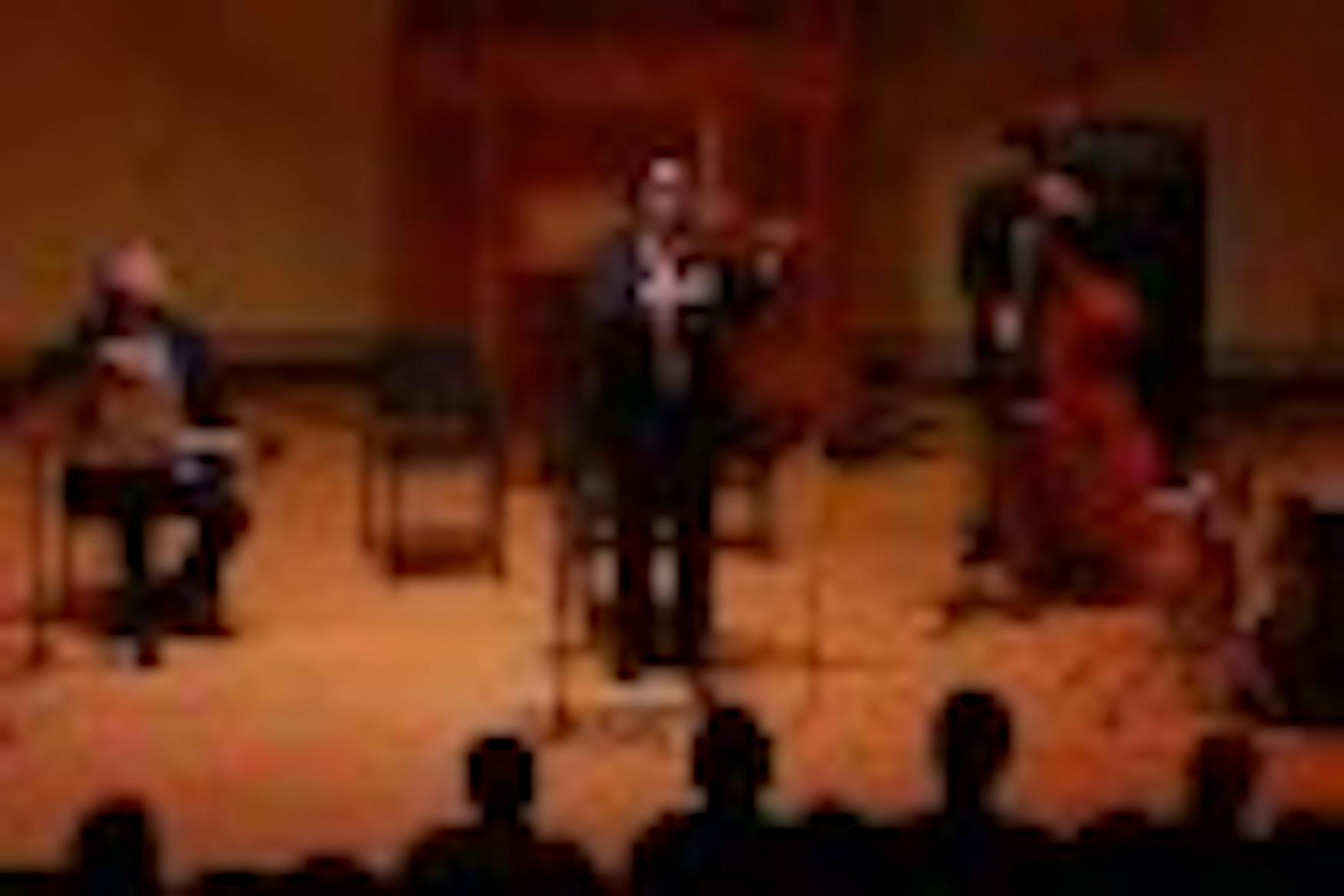Palestinian virtuoso inspires with Arabic music
The World Music Series brings internationally celebrated musicians to Brandeis and last Saturday, musician Simon Shaheen and his group, Qantara, came to the University and performed in the Slosberg Music Center. Qantara is composed of Shaheen on 'oud and violin, Bassam Saba on nay and flute, Najib Shaheen on 'oud, Walid Zairi on double bass and Tareq Rantisi on percussion. Shaheen is one of the most important and influential Arab musicians, performers and composers of his time. Among his many achievements, Shaheen has served on the Presidential Committee at the John F. Kennedy Center for Performing Arts and has released four albums: Saltanah (Water Lily Acoustics), Turaht (CMP), Taqasim (Lyrichord), and Shaheen: the Music of Mohamed Abdel Wahab (Axiom). Most notably, he released Blue Flame (ARK21, 2001). To create this album, Shaheen led his Qantara on a journey through "the world of fusion music to discover the heart of the Middle East." Shaheen explains "I want to create a world of music exceptionally satisfying to the ear and for the soul." The Los Angeles Times notes, "Simon Shaheen's success in combining characteristics of Middle Eastern music, Western classical music, jazz and Latin rhythms into a gorgeous tapestry can be traced to his capacity to find their common threads."
Prof. Judith Eissenberg (MUS) is the founder and director of MusicUnitesUS, a Brandeis program that "links the creative arts with academic inquiry in explorations of culture, history and tradition." The program strives to "further the understanding and appreciation of diverse cultures through music. We believe that music is a common medium that can help to unite diverse cultures in our own neighborhoods and transcend boundaries in the global community," Eissenberg said.
Eissenberg writes in the concert pamphlet introduction that Shaheen's "music is a journey, an exploration that becomes more elaborate and complex as it expands into an aural calligraphy that seems to go inward and outward at the same time. The artists in a concert of Arabic classical music invite us to feel tarab with them, a transcendent experience that is one of the goals of performance in this tradition."
Before the concert began, there was a brief pre-concert talk led by Virginia Danielson, author of The Voice of Egypt: Umm Kulthum, Arabic Song, and Egyptian Society in the Twentieth Century. Danielson gave an overview on Shaheen and his music. She began by explaining that Shaheen is "not another world music performer. He is solely responsible for everything non-Arabs know about Arab music." Danielson went on to add that Shaheen has an "uncanny ability to connect to whatever student is in front of him" and that he "represents the very best of our diverse heritage. He is a true virtuoso." One of the amazing aspects of Shaheen's musical ability, Danielson explained, is that the "longer he plays, the better he gets." Danielson explained that when Qantara plays, the members of the group often "make it up as they go along. The piece will be shaped by the improvisations."
Shaheen and Qantara started to perform soon after Danielson's talk. They opened with "Kahraman," an instrumental dance which contains two parts of improvisation. They went on to play "Iraq," an "Iraqi folk style melody," then "Arboresque" and finally, "Dance Mediterranea," a violin-centered piece with a lot of rhythmic changes and improvisation. At all times, Shaheen, the virtuoso performer, was acutely aware of his audience. When the audience responded positively to a moment of improvisation, for example, Shaheen absorbed the energy and let that be the driving force behind the direction of the piece.
After a 15-minute intermission, the concert resumed. Shaheen and his group started with "Taqism," a piece driven by spontaneous improvisation. After, they performed "Samai Thaqil," a four-part dance composition, "Breeze in Bisaan," "Blue Flame," and finally, an upbeat piece called "Waiving Sands."
Each piece gradually progressed in tempo and liveliness and built up to a crescendo. The concert ended on a joyful, festive note, celebrating a world of culture and the sense of unity that music can bring.



Please note All comments are eligible for publication in The Justice.